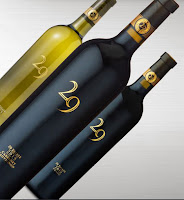TTAB Posts December 2018 Hearing Schedule
The Trademark Trial and Appeal Board (T-T-A-B not Tee-tab) has scheduled seven (VII) oral hearings for the month of December 2018. The hearings will be held in the Madison Building in Alexandria, Virginia. Briefs and other papers for these cases may be found at TTABVUE via the links provided.

December 4, 2018 - 10 AM: Progrexion IP, Inc. v. One Technologies, LLC, Opposition No. 91233945 [Priority contest over the mark BETTER CREDIT BETTER LIFE for the same goods and services related to credit repair and counseling].
December 4, 2018 - 2 PM: Marc Fisher, LLC v. Bottega Veneta, Opposition No. 91214253 [Opposition to registration of the product configuration mark shown below, for leather goods and shoes, on the grounds of ornamentality and lack of secondary meaning, genericness, and functionality. "The mark consists of a configuration of slim, uniformly-sized strips of leather, ranging from 8 to 12 millimeters in width, interlaced to form a repeating plain or basket weave pattern placed at a 45-degree angle over all or substantially all of the goods"].

December 5, 2018 - 2 PM: In re Catalyst Connection, Inc., Serial No. 87351233 [Section 2(d) refusal of MAKING YOUR FUTURE for “business consultation services for the manufacturing industry” and “providing training courses, workshops and webinars in the fields of employee development, leadership, sales and marketing strategies, manufacturing techniques, industry best practices and green manufacturing” in view of the registered mark MAKING THE FUTURE. TOGETHER for goods and services including “arranging and conducting business conferences and expositions in the field of manufacturing” and “providing online non-downloadable e-books and e-newsletters in the field of manufacturing; education services, namely, providing live and on-line classes, seminars and workshops in the field of manufacturing”].
December 6, 2018 - 2:00 PM: In re RRRAWI Corp., Serial No. 86767410 [Section 2(d) refusal to register the mark MBAR for “restaurant and bar services” in view of the registered mark M BAR in the stylized from shown below, for “restaurant and bar services, excluding Italian cuisine and macrobiotic cuisine"].
December 11, 2018 - 2 PM: Bruce Kirby, Inc. v. Velum Limited, Cancellation No. 92057217 [Petition for cancellation of a registration for the mark LASER for "sailing competitions, and regattas; sailing schools" on the grounds of nonuse and abandonment].
December 12, 2018 - 11 AM: American Express Marketing & Development Corp. v. Tung V. Bo, Oppositions Nos 91230559 and 91232714 [Oppositions to registration of AMERIXPRESS for "Import agency services" and AMERIXPRESS LLC for "Calcium supplements; Dietary supplements; Herbal supplements; Homeopathic supplements; Mineral supplements; Mineral nutritional supplements; Natural herbal supplements; Nutritional supplements; Probiotic supplements; Protein supplements; Soy protein dietary supplements; Vitamin supplements; Vitamin and mineral supplements" and for "Export agency services for the goods of others," on the grounds of likelihood of confusion with, and likelihood of dilution of, the mark AMERICAN EXPRESS and formatives thereof for a variety of services in the fields of business, finance, communication, ticket reservation, travel, concierge, mail order and hotel services as well as printed materials in the fields of travel, dining and hotels].
December 18, 2018 - 11 AM: In re Central Dynamics, LLC, Serial Nos. 86906610 and 86906682 [Section 2(e)(1) mere descriptiveness refusals of ECONCIERGE for “Platform as a service (PAAS) featuring computer software platforms for hotels, resorts, casinos, hospitality and transportation providers to communicate with and support guests before, during and after stays regarding preferences, profiles, planning and management of stays, dining, transportation and activities; providing temporary use of online non-downloadable software for hotels, resorts, casinos, hospitality and transportation providers to communicate with and support guests before, during and after stays regarding preferences, profiles, planning and management of stays, dining, transportation and activities," and EPROPOSAL for "Platform as a service (PAAS) featuring computer software platforms for hotels, resorts, casinos, hospitality and transportation providers to create, send, monitor and track responses to requests for proposals; providing temporary use of online non-downloadable software for hotels, resorts, casinos, hospitality and transportation providers to create, send, monitor and track responses to requests for proposals"].
Read comments and post your comment here.
TTABlog note: Any predictions? See any WYHA?s? Anything interesting?
Text Copyright John L. Welch 2018.

















































